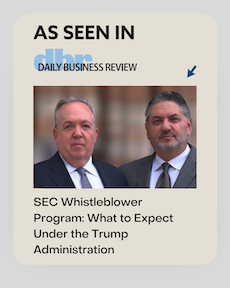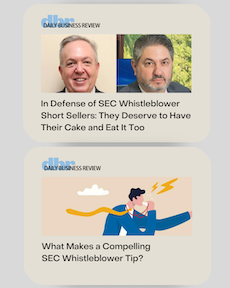Layering & Spoofing Manipulation
Manipulating the market is forbidden by federal securities and commodities law, because it creates an unfair situation. When someone manipulates the prices of securities, they are generally creating for themselves an opportunity to make a profit, using information that others not only don’t have but couldn’t possibly have. This puts other investors at a disadvantage through no fault of their own, and undermines confidence in the market itself—which is bad for everyone.
Nonetheless, spoofing, layering, and other forms of market manipulation happen—sometimes in the elite parts of the financial industry. That’s why the 2010 Dodd-Frank financial reform laws created financial incentives for whistleblowers to come forward with information about illegal activity in finance. Our securities whistleblower lawyers use decades of securities law experience to help those whistleblowers make their best cases to federal regulators and reap financial rewards.
Layering and SpoofingMarket manipulation distorts the “natural” price of securities, sometimes through artificially inflating or deflating prices. Two ways to do this are “spoofing” and its more complicated cousin, “layering.” Spoofing the market is manipulating the price of a security by placing many orders on one side of the market, thus moving the price either up or down. The trader then places an order on the other side, makes a profit, and cancels the original set of orders.
“Layering” is sometimes used interchangeably with “spoofing”; it’s a variation on the same idea. Rather than a cluster of orders all at the same price point, it uses a series of orders at different price points. The market price then becomes the middle of that spread of orders. The trader can then execute a trade on the other side of the market, creating a profit, and cancel the other orders.
Both types of market manipulation are prohibited by federal law. In particular, the Dodd-Frank Act expressly forbade spoofing. Prior laws had been applied against spoofers, but because these Depression-era laws didn’t use the word “spoofing” or describe it with specificity, they created some difficulties for regulators. Importantly, they also didn’t create criminal penalties for the practice; Dodd-Frank made it a felony if it is done knowingly. These changes have led regulators to pursue spoofing and layering much more aggressively.
Blow The Whistle And Reap the RewardsAnother important change made by Dodd-Frank is the creation of whistleblower programs, which were designed to incentivize market participants to report wrongdoing. If you bring original evidence of wrongdoing to the U.S. Securities and Exchange Commission or the Commodity Futures Trading Commission, and that information leads eventually to a penalty of more than $1 million, you can receive 10% to 30% of that penalty.
These programs create an opportunity for people who know about nonpublic wrongdoing—but to earn the reward, you know and follow some complex rules. That’s where our securities whistleblower attorneys can help. Both of our firms are led by experienced securities law attorneys who understand how regulatory agencies work. David Chase is a former SEC enforcement attorney; Scott Silver wrote a book (provided for free on request) on the securities whistleblower program. Call us today at 800.975.4345 or contact us online for a free, confidential consultation.
 Silver Law Group Home
Silver Law Group Home

